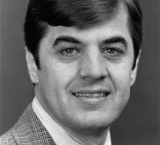Story:
The First Line Manager: The Customer
The Chief Executive Officer of my Company said, “Our customer must be in the center of everything we do.” I am not sure the company’s first line managers are acting on this statement. It is just another slogan. I am a first line manager. How can I use this vision to improve processes? This article is about how I carried the vision to the field.
The Chief Executive Officer of my Company said, “Our customer must be in the center of everything we do.” I am not sure the company’s first line managers are acting on this statement. It is just another slogan. I am a first line manager. How can I use this vision to improve processes? This article is about how I carried the vision to the field.
In a previous article I spoke about a process we were taking back to the basics. I and the supervisors of our division found several root causes of customer problems in a process. The main issue is we got away from doing the basic process we trained the employees to do several years ago. I know our employees thought they were doing the right thing for each other. Their joint efforts actually made problems for our customers.
At the planning meeting with the supervisors of the departments involved, I opened the meeting with the statement, “Our customer must be at the center of everything we do.” That is the focus of this meeting. Every process we reviewed reflected on how it affected our customer. We saw how the impact of our lack of focus on the customer in each process caused customer problems. We agreed to develop training to discuss these processes. The training course would be two to three hours long. The training gave examples of the process problems; and, the why we needed to change. The whole thrust was,” so the process is good for us; but, is “Our customer in the center of everything we do.”
I opened the training meeting with the comments on why and how we determined to change our processes. The opening statement was, “Our customer must be in the center of everything we do.” We identified several problems. The process of order creation involved too many people. The field people would be given the power to create orders. They know the order they need. They will get the order remotely from the computer and complete the order. This process involved only one employee, sometimes the process we were using involved three people. The more people involved the more chance for human error. We understand that each employee thought they were doing the right thing.
How does putting the customer in the center of everything relate to processes? Here is an example of one conversation. A lineman told me of an instance where he drove ninety miles (a gross overstatement) to find that the customer could not be served. The meter pole was in the center of a field. The job would need engineering and crew work. He said engineers should go on all new customer installs before him. I asked him what he did. Did he contact his engineer to relay what he found? He said he did. I said then his trip is not wasted. I stated if we put the customer at the center of this process instead of him what should he do. He did not answer. I asked another lineman on how many cases could he serve the customer by going out before the engineer. He would not answer. I stated at least fifty percent of the time. He said I was right. This lineman said I get your point it is better for us to go out first since customers would receive power quicker. This answer came because I asked them to think about which process is best for our customers.
Here is the point. My Chief Executive Officer talks about putting the customer in the center of everything we do. It is my responsibility to make this a reality in our processes and in our employee’s decision-making. If his first line managers do not follow through, his vision for our company is blurred. If his first line managers follow through, his vision will be real in the field.



You need to register in order to submit a comment.